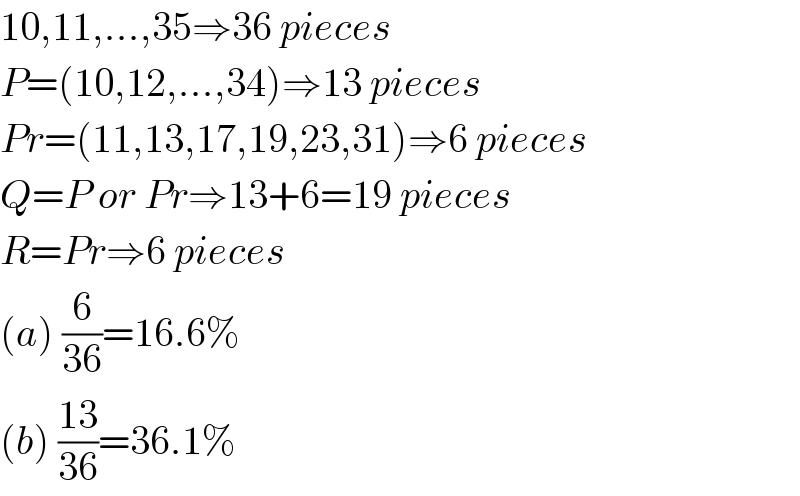
Question and Answers Forum
Previous in Probability and Statistics Next in Probability and Statistics
Question Number 11599 by tawa last updated on 28/Mar/17

Answered by mrW1 last updated on 29/Mar/17

Commented by tawa last updated on 29/Mar/17

| ||
Question and Answers Forum | ||
Previous in Probability and Statistics Next in Probability and Statistics | ||
Question Number 11599 by tawa last updated on 28/Mar/17 | ||
 | ||
Answered by mrW1 last updated on 29/Mar/17 | ||
 | ||
| ||
Commented by tawa last updated on 29/Mar/17 | ||
 | ||